Decades of floods, still no lessons learned
Natural deep ditches can be turned into rainwater reservoirs to reduce wastage
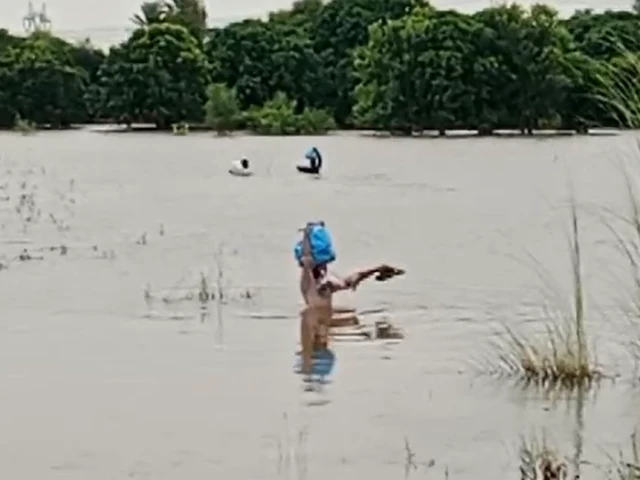
In Pakistan since the 1950s to date, we have faced almost three dozen flash flooding but unfortunately we have not learnt any lesson to prepare ourselves to cope with future devastation – neither by the Planning Commission and policymakers nor as a nation.
What we have seen in so-called "crisis management" on the ground during all past and present floods is a "firefighting exercise" and nothing else. Building big dams are not real solutions, these are costly and time-consuming projects but small dams, rainwater reservoirs and ponds are low-cost, quickest doable projects for storage and use in agriculture in Barani as well as river canal water-fed areas.
From K-P, Potohar Punjab, South Punjab, Sindh, Balochistan to Karachi, many natural deep ditches are available, which can be turned into rain and floodwater reservoirs to minimise the wastage of precious water into sea. Another dilemma is that we are opportunists and reap monetary benefits during any crisis. Opportunists took "India-Pakistan escalation" as a golden opportunity to mint money, started hoarding wheat, Basmati rice, corn, and other essential kitchen staples. As a result, prices skyrocketed in the country, denting exports and adding miseries to the lives of masses.
Since late August and into early September 2025, Pakistan has suffered one of its worst flooding crises in decades. Torrential monsoon rains, cloudbursts, and massive water releases from dams in neighbouring India combined to overwhelm Ravi, Sutlej, Chenab, Beas and other river systems. The result was a cascade of destruction: swollen rivers breaching embankments, villages submerged, homes and farmlands washed away, and livestock left with nowhere to go. The national death toll from flooding since June surpassed 1,000. The crisis is far from over: rising heat in relief camps, shortages of shelter, clean water, and food are compounding the suffering.
Pakistan's agrarian heartland – Punjab – has borne the heaviest toll. Central and Southern Punjab – the country's food basket – has seen damages to crops. The international media covered headlines of table stories about devastating crops losses in Pakistan, which was followed by our mainstream media and podcasts that presented a gloomy outlook of Pakistan's agrarian economy. This false reporting led to augmented hoarding of staple commodities including wheat, Basmati rice, corn, etc.
Thanks to the Crop Reporting Service, Agriculture Department Punjab for timely sharing data on September 10, which nullified international and local media's in-house crop loss assessments. Rice crop, which was reported as 60-70% damaged, suffered actual damages of 10.1%, cotton, falsely reported as 35% damaged, incurred only 1.7% loss, while sugarcane, earlier shown as 30% damaged, faced actual losses of 5%
False propaganda being done by any forum was aimed at increasing prices of wheat, Basmati rice, sugar, cotton, maize, and other field crops to earn unfair profits. On the other hand, it severely impacted exports of the food group, which had been showing a continuous decline since July 2025. Pakistan Cotton Ginners Association (PCGA) data shows a remarkable performance of cotton, as arrivals in markets surged 40% year-on-year as of mid-September from major producing provinces. Sindh recorded a tremendous jump to 1.31 million bales, compared to 0.9 million bales during the same period of 2024. Punjab recorded arrivals of 0.69 million bales compared to 0.54 million bales last year.
Some farmers have lost almost all their expected yield. One rice and potato farmer from Chiniot reported that 13 out of his 15 acres were submerged. Another lost his buffaloes and income source with no milk remaining for his children. But these reports cannot be accounted for to show an overall gloomy scenario. Over 2 million have been displaced in Punjab alone; many more are at risk in Sindh. Relief camps, tents, roadside shelters, limited access to clean water, lack of sanitation, outbreaks of waterborne diseases, skin infections, vector-borne illnesses, heat and overcrowding in camps amplify those risks.
Early signs due to hoarding show significant price volatility. For example, Basmati rice (old crop) prices surged up to Rs13,000-14,000 per 40 kg, corn prices soared to Rs4,300 per 40 kg, sugar and wheat wholesale prices climbed to Rs177 per kg and Rs100 per kg, respectively. Fresh vegetable, onion and potato prices surged, which badly affected domestic consumers and exports as well.
Overall, exports of agriculture and food products plunged 29.62% as the country fetched $346.34 million in August 2025 compared to $492.06 million in August 2024. Food group exports fell 17.28% month-on-month compared to $418.69 million in July 2025.
Food inflation – mainly engineered – is already on the upswing. Many households will likely hit or slip below the poverty line. While nature has wreaked havoc, human behaviour has complicated relief and recovery. Some traders, Arthis and hoarders have begun holding back staples – rice, wheat, sugar, corn, sorghum, often also onions and potatoes – anticipating scarcity and higher prices. These practices artificially reduce supply in local markets, pushing up prices beyond what even the crop loss alone would cause.
Market watchers are warning of possible price hikes of 30-50% for essential food items if the hoarding continues unchecked. In some regions, wholesale vegetable prices have already jumped 30-40%. Relief supplies are being transported but they seem insufficient. Displaced populations report delays and inadequate rations. Opportunists are exploiting the crisis, buying surplus or what little remains with farmers at low rates, then selling at steep markups. In some areas, lack of oversight allows such behaviour to flourish. Price control mechanisms and regulatory oversight are being called for by business groups and civil society – suggestions include corrections through policy to dent hoarders and profiteers, imports of staples after domestic harvests and prior to sowing, and ensuring supplies to stabilise markets.
To prevent the tragedy from deepening, a multi-pronged strategy is essential:
1. Immediate food and shelter relief must be scaled up, especially for remote, rural, and displaced populations. Ensure clean water, medical services, and sanitation to prevent secondary disasters.
2. Transparent pricing and anti-hoarding actions are required. Authorities need to monitor markets actively, penalise profiteering, and regulate supply chains. Protect farmers through support price, and free seed distribution. Loss compensation, feed for animals, and veterinary care are essential.
3. Open import policy through an efficient private sector is appropriate. If domestic crop loss is high, temporary imports of staples could help stabilise supply and prices until next harvests. Ban on import of wheat and sugar by the private sector is ill-logical, as sowing of wheat is to start in November-December; till then wheat and flour prices may create chaos.
4. Invest in flood resilience. Better embankments, river management, small bridges on broken motorways, early warning systems, reforestation, and better urban planning to avoid developments in high-risk zones are critical steps. Floods are partly worsened by environmental degradation and unplanned development.
Pakistan's 2025 floods are more than a natural disaster – they are a test of institutional resilience, social justice, and political will. The scale of crop destruction, livestock loss, human displacement, and rising food insecurity is such that recovery will demand not just relief, but systemic reform.
If managed well – with compassion, fairness, and accountability – this crisis could become a turning point: strengthening systems, reinforcing safety nets, and building resilience against future climate shocks. But if profiteering and inequity go unchecked, the floods will leave an even deeper wound: one of lost trust, growing inequality, and long-term food and livelihood insecurity.
The writer is former VP of KCCI, a commodities and int'l trade expert


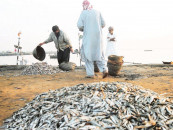




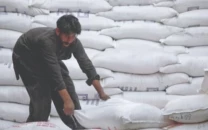


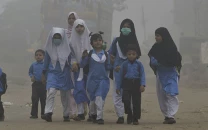


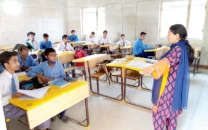








COMMENTS
Comments are moderated and generally will be posted if they are on-topic and not abusive.
For more information, please see our Comments FAQ